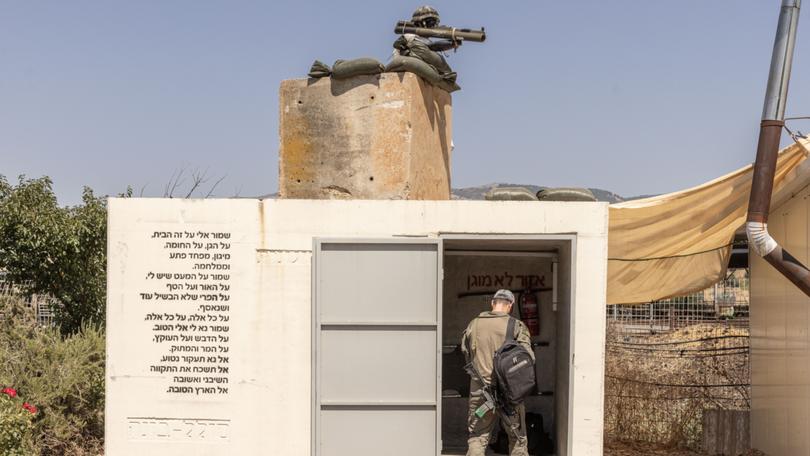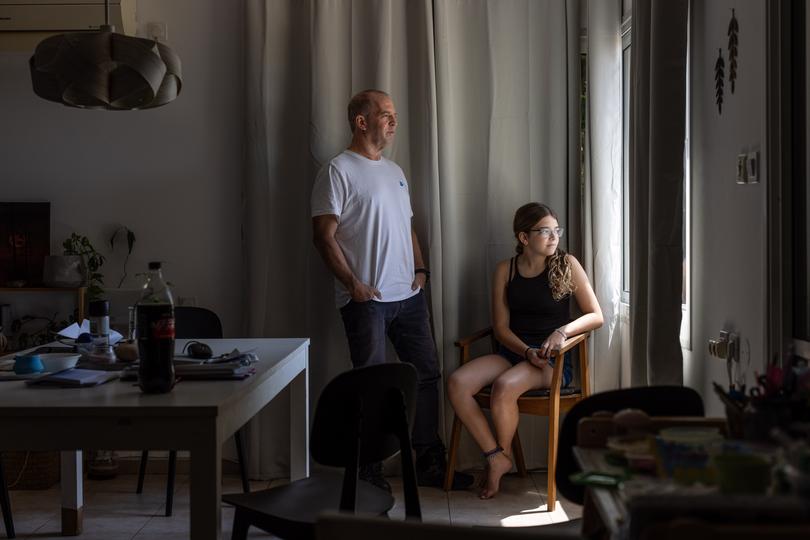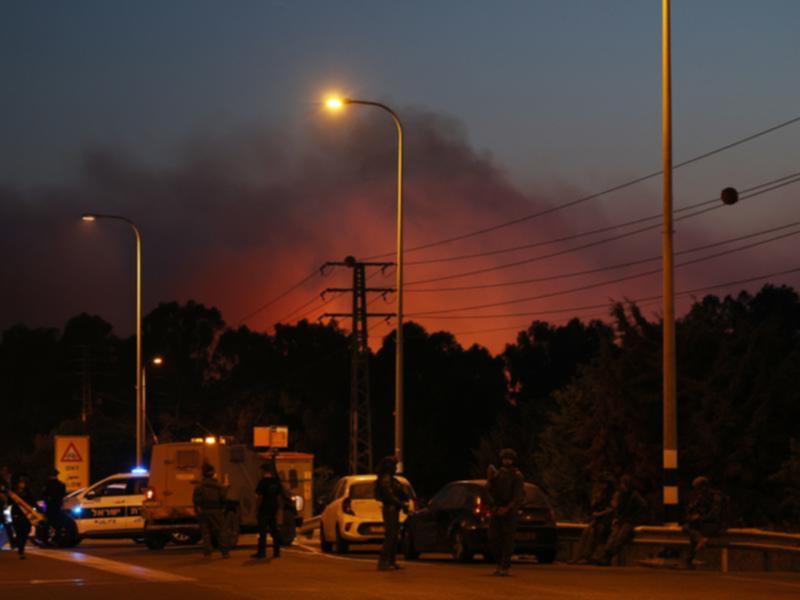THE NEW YORK TIMES: Fear stalks Israel’s communities on the front lines with Lebanon

For months, Erez Bergman had been working to encourage the evacuated residents of northern Israel, near the border with Lebanon, to return to their homes, with the hope that children could return to their schools this fall and residents could fix up the damage wrought by Hezbollah’s missiles and drones.
Like 80,000 other Israelis from the north, Bergman, 51, his wife, Maya, and their three school-age children left their house in Kibbutz Snir in October, after the Israeli government decided to distance residents from the northern border — the first such mass evacuation of the area in Israel’s history.
Following the Hamas-led Oct. 7 attacks and Israel’s bombardment of the Gaza Strip, Hezbollah was firing rockets into northern Israel and the Israeli military was hitting back, leading to months of tit-for-tat attacks that hit villages and towns in both southern Lebanon and northern Israel.
Sign up to The Nightly's newsletters.
Get the first look at the digital newspaper, curated daily stories and breaking headlines delivered to your inbox.
By continuing you agree to our Terms and Privacy Policy.In April, the Bergmans decided to return to Snir, a cooperative village in the picturesque Galilee Panhandle, a finger of Israeli territory that juts upward along the border. But in late July they had to leave again — for how long this time, they don’t know — as tensions between Israel and Hezbollah reached their highest level in months. Bergman and other northern residents now say they feel as if they may be looking at “another lost year.”
Before the latest escalation in violence, Bergman had been spearheading a “Coming Home” project on behalf of the local council with the aim of bringing as many of the evacuees as possible back for the start of the new school year on Sept. 1. He came back with his family “out of Zionism,” he said in mid-July, sitting at the family’s dining table with a panoramic view of southern Lebanon.

He was hoping to revive his largely abandoned community and others in the area, which have long embodied Israeli sovereignty and resilience.
Or to put it more plainly, he said, “We were fed up being in hotels.”
Bergman, speaking after a night of heavy barrages, said the family was already having misgivings about their decision to return home.
Days later, a missile landed at the bottom of the Bergmans’ backyard, blowing out all the windows and causing damage inside the house. Luckily, nobody was home at the time.
Half of Snir is in the direct lines of sight of Hezbollah strongholds in south Lebanon, leaving it exposed. Between the booms, an eerie silence prevailed. Snir’s clinic and grocery store were not functioning. Bergman said it was “like living in a graveyard.”
The family was not able to sit out on their back terrace and were living in permanent twilight, keeping the curtains and blinds closed.
On July 23, Israel’s education minister, Yoav Kish, announced that the risk was too great and that schools in the evacuated zone, within 3 miles of the border, would not reopen next month.
Then, on July 27, a rocket from Lebanon killed 12 children in the Druze Arab village of Majdal Shams in the Israeli-controlled Golan Heights. Israel subsequently assassinated Fouad Shukur, a senior Hezbollah commander, in Beirut. The leader of Hezbollah, Hassan Nasrallah, threatened retaliation for Shukur’s killing, fueling fears in both Israel and Lebanon that the cross-border hostilities could spiral into all-out war.
About a week ago, the Bergmans left again, going to stay in Kibbutz Beit Alfa, 70 miles to the south. Speaking later by phone, Bergman said they are now reconsidering their own future in Snir. They will see how things develop and wait out the coming storm, he said.
Communities like Snir were established decades ago by hardy pioneers who came to work the borderlands and establish Israeli sovereignty up to the last inch of territory. Their fates are uncertain. Once government funding for temporary, alternative accommodations runs out, community leaders fear that those who do move back will be the financially weaker residents who have fewer options and that many young families won’t return at all.
In the Galilee Panhandle, the summer months are usually filled with vacationers kayaking in the cool waters of the Jordan River and its tributaries. Many villages in the area offer holiday accommodation and would normally be earning good income from tourism.
This year, the hillsides, orchards and fields are a checkerboard of dry, scorched earth, a result of bushfires, mostly set off by Hezbollah’s frequent attacks.
This close to the border, there is practically no warning time for incoming fire. Typically, the sirens go off after the projectiles already have been intercepted or have struck. The residents hear the roar of the rocket engines and see the drones as they fly overhead. The Bergmans’ house has a fortified safe room, but many do not.
Since Oct. 7, at least 22 Israeli soldiers and a similar number of civilians have been killed by Hezbollah’s barrages from Lebanon. More than 460 people in Lebanon have been killed by Israeli fire. Most were militants, but more than 100 were civilians, including 12 children and 21 health workers, according to the United Nations and Lebanon’s Health Ministry.
Many of the Israelis left in the front-line communities belong to the armed local emergency teams, now serving under the auspices of the military reserves.

A member of Snir’s emergency team, Lior Shelef, 48, said in mid-July that he was the only person left on his street.
Born and raised in Snir, Shelef remembered sleeping in a bomb shelter for three years as a child, during Israel’s first war in Lebanon in the 1980s.
“We want to make sure that the children coming back here will have a better childhood,” he said, adding that while his own family, living in a hotel a half-hour’s drive south, was not about to return, “We will never give up our home.”
Some Israelis say they want to see military action that would permanently distance Hezbollah forces from the border. But like some others here, Shelef seemed ambivalent about the need for an all-out conflict with Hezbollah in Lebanon, which would probably be devastating for both countries. In the end, he said, quiet will be restored only by means of a diplomatic resolution “with a war or without a war.”
Kfar Szold, a kibbutz that has not been evacuated, is a few minutes drive from Snir. Many of its members left anyway, soon after Oct. 7. But they did not receive government funding for alternative accommodation, and gradually, many have returned.
Nitai Galili, 31, a naturopath and resident of Kfar Szold, spent six weeks in Portugal after Oct. 7 before coming home. The mother of a 1-year-old, she said she felt “a constant existential fear.”
One barrage of rockets recently hit the road outside the kibbutz, narrowly missing two cars.
“You can last it out for a month or so,” Asaf Langleben, 49, the chair of Kfar Szold, said, “but there’s no end in sight.”
This article originally appeared in The New York Times.
© 2024 The New York Times Company
Originally published on The New York Times
